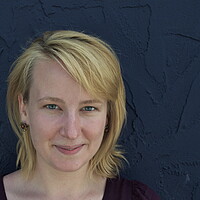Why Diana Nyad refused to let her 'Xtreme Dream' die
On Saturday morning, 64-year-old Diana Nyad slipped off her white terry cloth robe, put on her swim cap and goggles, and jumped into the Hemingway Marina in Havana, Cuba. After two days and two nights of swimming, Ms. Nyad touched the shores of Key West, Fla. She had become the first person to swim across the Straits of Florida without the protection of a shark cage.
A throng of cheering supporters and eager reporters greeted the sunburnt swimmer, who returned the salutations with a fist pump.
"I got three messages," said Nyad just after she reached the shore. “One is we should never, ever give up. Two is you never are too old to chase your dreams. Three is it looks like a solitary sport, but it’s a team.”
The often temperamental weather along the route, together with the myriad of jellyfish and sharks in the waters make the swim a formidable task.
Nyad remembers dreaming about swimming across the Florida Straits during her first visit to Cuba before the Communist takeover when she was 8 years old. By 1978, Nyad had become an elite marathon swimmer, and made her first attempt to cross. The trip ended due to difficult water conditions. During the 1970s, the swimmer won multiple other swimming marathons, even becoming the first woman to swim around the island of Manhattan at age 26.
Throughout the past three decades, Nyad has worn a variety of different hats, working as a sports journalist for publications such as The New York Times and Newsweek, and authoring several books about sports training, all while continuing to swim.
But in the past several years, Nyad has revisited the goal of crossing the Florida Straits, dubbing it the "Xtreme Dream."
"It's all authentic. It's a great story. You have a dream 35 years ago – doesn't come to fruition, but you move on with life. But it's somewhere back there. Then you turn 60, and your mom just dies, and you're looking for something. And the dream comes waking out of your imagination," Nyad told CNN's chief medical correspondent Sanjay Gupta.
A team of nearly 40 crew members accompanied the swimmer from the start of her journey to the end, updating Nyad's progress on the swimmer's blog, feeding her liquid meals through a tube at regular intervals, and warding off natural threats to the swimmer's progress, such as sharks and jellyfish.
To keep her mind clear while completing the grueling 111-mile swim, Nyad hummed her favorite lullabies and songs to herself, including "Ticket to Ride," and "Paperback Writer" by the Beatles, according to The New York Times.
"It was really rough that first day, Saturday, after the start and I just said: 'Forget about the surface up. Get your hands in somehow, and with your left hand, say, push Cuba back, and push Florida towards you,' " Nyad told reporters after her swim.
The only other person to have successfully swum the crossing from Cuba to Florida was Australian Susie Maroney in 1997. However, Ms. Maroney, who was 22 at the time of her crossing, completed the swim in a protective shark cage, according to an article in the Boca Raton newspaper. The wake created by the cage creates a draft that somewhat helps the swimmer.





